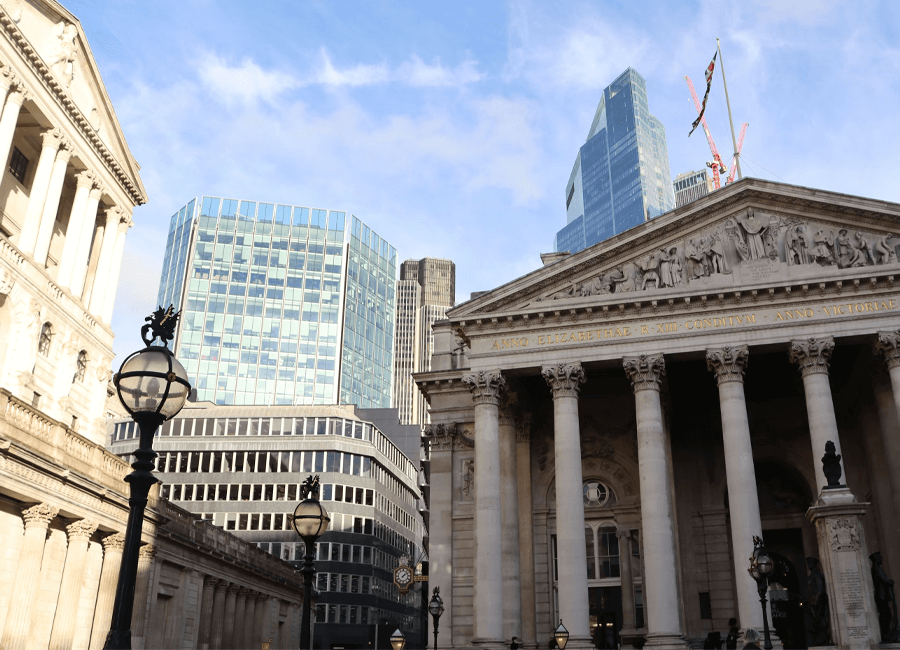In the 1940s, noted psychologist Carl Jung theorised that humans use symbolism and innate imagery that transcends language to understand complex concepts. Jung’s work focused on how symbols and shared myths permeate the conscious and subconscious mind.
Throughout his career, the Swiss psychologist posited that individuals have both an inner self and a persona – an identity that is projected to others. This is something that is not a true reflection of ourselves, but the idea of who we want to be that we share with others.
Central to this these personas were archetypes. An archetype is best described as a heuristic image that embodies a set of personality traits, features and qualities that we, as humans, are able to innately recognise. Jung’s original set were the: Self, Anima, Animus, Shadow, Persona, Father, Mother, Child, Wise Old, Hero, Trickster and Maiden.
Today, archetypes are particularly easy to recognise in works of fiction, serving as a shortcut for us to understand a character’s personality, motivations and how we are expected to feel about them. For example, the Hero willingly sacrifices themselves for others, whilst the Mentor serves and protects a hero before or during their journey.
The Role of Archetypes in Branding
As collections of characters and qualities, archetypes have grown not only to encompass individual personalities – but shorthand to describe the role of brands in our lives as well. Whilst by no means a scientific measure, such instruments are helpful to align branding, marketing and product teams and, crucially, communicate the innate and relationship-oriented shorthand that language cannot.
Importantly, archetypes differ significantly from stereotypes. They are based on universal truths that are rich, distinctive and innate. Stereotypes, by contrast, are rooted in culture-specific norms that lack distinction and variation.
| Tweet This | |
| While stereotypes are rooted in culture-specific norms, archetypes provide a framework for understanding universal truths that transcend language. |
When properly identified, a brand archetype should reflect the personality that a company or product wants to convey. It should set the scene for the relationship customers can expect to have with the brand and create expectations for the role the brand aims to play in their life. But more than this, by pairing archetypal personality traits with a well-defined customer persona, it’s possible to create distinctive brands that are guided by the market, not competitors.
It is generally agreed that there are 12 brand archetypes. They are the: Innocent, Everyman, Hero, Outlaw, Explorer, Creator, Ruler, Magician, Lover, Caregiver, Jester, and Sage. Let’s take a look at each of these and what they represent.
The Innocent
Brands that fit The Innocent archetype are defined by happiness, simplicity and honesty. They exhibit optimism and safety but can be at risk of being perceived as negative. Their core desire is to spread joy and avoid deceit. Considered fun by some, these brands rely heavily on their values, virtues and exuberant, positive energy.
Example brands: Dove, Whole Foods, Evian, Coca-Cola, Nintendo
The Everyman
Also known as The Regular Guy, this archetype exemplifies the desire to belong above all else. These brands are relatable and approachable, without any strong personality traits that would make them stand out in a crowd. Though they are sometimes at risk of being forgotten, the everyman is an inclusive part of the community that is trustworthy and pragmatic.
Example brands: IKEA, Tesco, Budweiser, Target, Levi’s
The Hero
Heroic brands have a strong desire to drive change, are guided by a moral compass and act as an inspirational example to others. Proud of their mission, or journey, brands that fall under this archetype are courageous and motivational, but can easily be undermined if promises fail to live up to high expectations.
Example brands: Nike, BMW, The Red Cross, US Marines, FedEx
The Outlaw
Brands that align with The Outlaw archetype are rebellious, disruptive and driven by the desire for revolution. Sometimes known as The Rebel, these brands aren’t interested in maintaining the status quo, seeking to rip up the rulebook and create something unique. They typically have niche, but loyal followings, inspiring tight-knit and self-organising communities.
Example brands: Harley Davidson, Greenpeace, Red Bull, Virgin, Diesel
The Explorer
Like their namesake, brands described as explorers seek the thrill of discovery. Their followers are driven by the desire for freedom, adventure and new experiences. They relish in overcoming obstacles, acting as pioneers and the excitement of discovery. At risk of stagnation, these brands are excitement seekers that empower customers to be independent.
Example brands: Jeep, Patagonia, Jack Daniels, The North Face
The Creator
Imaginative and inventive, these brands are driven to build things that have lasting, authentic and meaningful value. Often, this extends to their customer relationships, enabling individuals to express themselves in creative ways. They are driven by originality, unique ideas and non-conformity – daring to push the boundaries of product design, brand voice and artistic vision.
Example brands: LEGO, Apple, Etsy, Pinterest, Pixar, Crayola
The Ruler
The Ruler is driven by authority and a desire to control. They abide by rules, project confidence and are considered powerful, confident brands. Though brands that fit this archetype are often considered leaders, they can be at risk of appearing cold and uncaring. Rulers draw on imagery associated with importance, nobility and luxury.
Example brands: Boss, Mercedes-Benz, Qantas, Rolex
The Magician
These brands are dreamers that live to transform, elevate and heal. This archetype is also closely associated with visionary foresight and spiritual connectivity. They are knowledgeable, mysterious and serve as a catalyst to bring new ideas into being. At the core of every magician is the desire to fascinate and mesmerise customers with promises that turn something simple into something greater.
Example brands: Dyson, Audi, Disney, Polaroid, MAC Cosmetics
The Lover
This archetype is about creating relationships, evoking emotions and celebrating connection. Such brands encapsulate a wide variety of love, including parental, familial, spiritual and romantic forms. They are passionate and intimate, but risk being perceived as overbearing or dramatic. Aesthetic considerations form an important part of the appeal of these brands.
Example brands: Hallmark, Haagen Dazs, Chanel No5, Godiva, Victoria’s Secret
The Caregiver
Deriving meaning from the act of helping others, The Caregiver is firmly rooted in the challenges and joys of everyday life. These brands are compassionate and self-sacrificing. They are willing to nurture others, drawing on imagery that portrays family life, community and sentimental emotions. Described best as generous and benevolent, brands that fall under The Caregiver archetype place a large emphasis on customer service and employee welfare.
Example brands: TOMS, WWF, Volvo, Johnson & Johnson, Nivea
The Jester
Of all the brand archetypes, The Jester is the most fun, light-hearted and humorous. These brands live in the moment – often appearing impulsive and unrestrained, they are not afraid of appearing the fool. Easy to spot in a crowd, brands that fall under this archetype promise entertainment and an enjoyable journey. They are attracted to the unusual, the unconventional and are bursting with exuberance.
Example brands: Ben & Jerry’s, Old Spice, Wendy’s, Dollar Shave Club
The Sage
The Sage is the embodiment of wisdom. These brands are knowledgeable, using their knowledge in the pursuit of truth and sharing their expertise with others. They celebrate life-long learning and are trusted, reliable sources of information. Brands that align with The Sage archetype often demonstrate a strong vocabulary and keen problem-solving skills but can risk appearing patronising or aloof to some.
Example brands: Google, BBC, New York Times, National Geographic
What’s Your Brand Archetype?
Every brand has a different personality. There are nuances and complexities not represented within these twelve groups. And some brands exhibit the qualities of multiple archetypes. Because branding is a complex field – open to qualitative interpretation and individual understanding. But, having a clear goal in mind helps to give a direction of travel. It provides a benchmark to reference. It offers a way to measure consumer perceptions against expectations.
So, what's the best way to determine your brand archetype? As with most complex branding systems, there is no single or easy framework to rely on. Instead, it's important to balance the considerations of your customers, competitors and company. If you're developing a brand that is new to the market, ask the following questions:
1 ) What kind of personality and relationship do customers want to have with a brand in this space?
2) How do our existing vision, mission and values translate into a personality and archetype?
3) What does the competitive landscape look like, and how should that influence our decisions?
Alternatively, if you are working with an established brand, these questions stop being theoretical. Instead of asking what kind of brand personality customers might want from your product or service - you should be looking to find out how your brand is already perceived. Because every brand has a personality. It's just that some are stronger and more memorable than others.
| Tweet This | |
| To determine your brand archetype, it's vital to understand your company culture, customer needs and competitive landscape. That's where you'll find true branding whitespace. |
To answer these questions, you'll need to lean on a mix of methods. Basic surveys that substitute core emotional aspects for archetypes might get you some of the way. And internal reflection with key stakeholders will certainly help. But to really understand the nature of the relationship between your customers and your brand - you'll need to turn to qualitative research. In particular:
- Focus Groups are ideal for establishing group dynamics, collecting a range of views within a homogenous group and watching conversations play out in real-time. They help you get to the social, shared truths that customers are willing to discuss.
- Individual Interviews are more personal than focus groups. By sitting down with individuals, you have the opportunity to ask more reflective questions, get to know the people say across from you and connect with the deep-rooted psychological motivations & desires of customers.
- Ethnographies provide an opportunity to observe consumers in their day-to-day routines. You'll be able to observe first-hand how they interact with your brand, make decisions and the impact of their wider environment on the choices that they make. This can be particularly effective to inform later focus group or interview questioning.
- Diary Studies are a way to get the rich insight of ethnographies at greater scale. Though they may not be as observational in nature, asking consumers to regularly reflect on their interactions and relationship with your brand offers a window into their frame of mind and the emotions that surround it.
Ultimately, branding is a slippery concept. Through frameworks like Jungian archetypes, we're able to peel back some of those layers to better understand the signs, signals and semiotics that inform consumer perceptions. But, when embaring on your branding journey - be aware not to fall into any pitfalls along the way. Archetypes help us put the emotions that brands evoke into words. But they aren't stereotypes. Some industries may be crowded with certain archetypes, but that doesn't mean you have to follow the trend.
It's easy to see archetypes as a collection of words, colours and visual symbols that act as instructions on how to build a brand. That's not quite the case. Archetypes aren't constraints to be worked within. And industries aren't limitations on archetypes. They are starting points, shortcuts and signposts that tell us about how people think. Remembering that, and creating unique expressions based on customer insight, will lead you down the path to success.


















